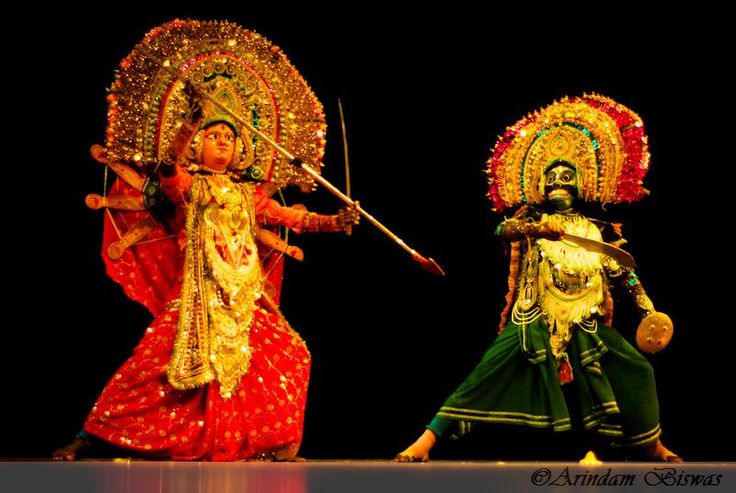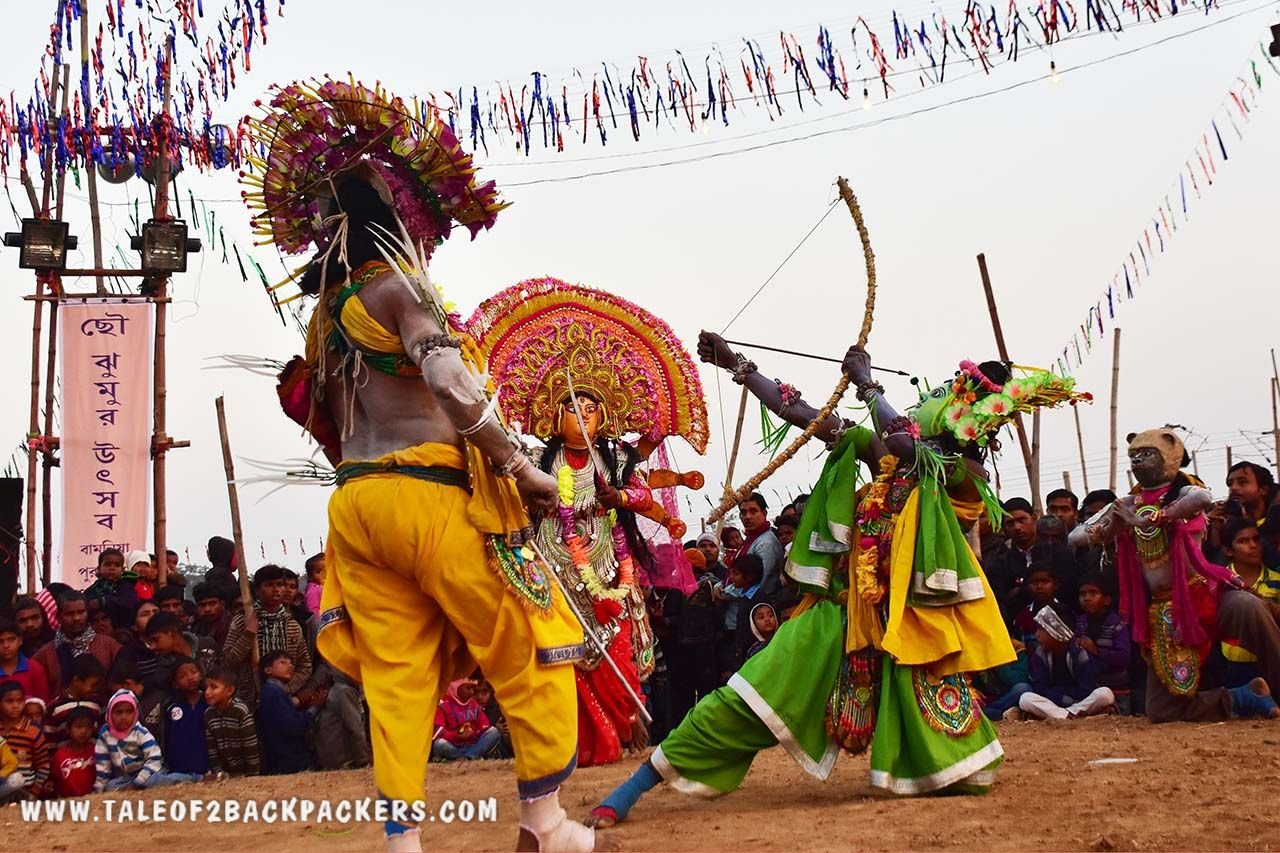ॐ श्री गुरुभ्यो नमः ॐ श्री शिवानन्दाय नमः ॐ श्री चिदानन्दाय नमः ॐ श्री दुर्गायै नमः
Source of all Images in this Blog-post : Google Images : ‘Google Image Search’ will reveal the multiple sources of every single image shared in this Blog. For more details, kindly see ‘Disclaimer‘
Chhau dance is a tradition from eastern India that enacts episodes from epics including the Mahabharata and Ramayana, local folklore and abstract themes. Its three distinct styles hail from the regions of Seraikella, Purulia and Mayurbhanj, the first two using masks.
Buy Chhau Dance Masks of Purulia Online on Amazon India

Chhau dance is intimately connected to regional festivals, notably the spring festival Chaitra Parva.
Its origin is traceable to indigenous forms of dance and martial practices. Its vocabulary of movement includes mock combat techniques, stylized gaits of birds and animals and movements modelled on the chores of village housewives.

Chhau is taught to male dancers from families of traditional artists or from local communities. The dance is performed at night in an open space to traditional and folk melodies, played on the reed pipes Mohuri and Shehnai.
The reverberating drumbeats of a variety of drums dominate the accompanying music ensemble.

Buy Chhau Dance Masks of Purulia Online on Amazon India
Chhau is an integral part of the culture of these communities. It binds together people from different social strata and ethnic background with diverse social practices, beliefs, professions and languages.
However, increasing industrialization, economic pressures and new media are leading to a decrease in collective participation with communities becoming disconnected from their roots.

Chhau dance, also spelled as Chau or Chhaau, is a semi classical Indian dance with martial, tribal and folk traditions, with origins in Mayurbhanj-Seraikella Belt in Odisha, and slowly panned out to neighbouring regions of Jharkhand and West Bengal.
It is found in three styles named after the location where they are performed, i.e. the Seraikella Chau and the Mayurbhanj Chau of Odisha and the Purulia Chau of Bengal.
The dance ranges from celebrating martial arts, acrobatics and athletics performed in festive themes of a folk dance, to a structured dance with religious themes found in Shaivism, Shaktism and Vaishnavism.

The costumes vary between the styles, with Purulia and Serakeilla using masks to identify the character. The stories enacted by Chhau dancers include those from the Hindu epics the Ramayana and the Mahabharata, the Puranas and other Indian literature.
The dance is traditionally an all males troupe, regionally celebrated particularly during spring every year, and may be a syncretic dance form that emerged from a fusion of classical Hindu dances and the traditions of ancient regional tribes.
The dance is amazing and brings together people from diverse socio-economic backgrounds in a festive and religious spirit.
Buy Chhau Dance Masks of Purulia Online on Amazon India
Features of Chhau
The Chhau dance is mainly performed during festivals in the region of Jharkhand, West Bengal and Odisha, especially the spring festival of Chaitra Parva and in which the whole community participates. The Purulia Chhau dance is celebrated during the Sun festival.
Masks form an integral part of Chhau dance in Purulia and Seraikella styles. The knowledge of dance, music and mask-making is transmitted orally.
The Chhau dance found in northern Odisha does not use mask during the dance, but they do when the artists first appear on the stage for introduction to the audience.
The two styles of Chhau dance that use masks, blend within it forms of both dance and martial practices employing mock combat techniques (called Khel), stylized gaits of birds and animals (called Chalis and Topkas) and movements based on the chores of village housewives (called Uflis).
This form of Chhau dance has no ritual or ceremonial meaning. It is a form of community celebration and entertainment.
The dance is performed by male dancers, at night in an open space, called Akhada or Asar. The dance is rhythmic and set to traditional folk music, played on the reed pipes Mohuri and Shehnai.
A variety of drums accompany the music ensemble including the Dhol (a cylindrical drum), Dhumsa (a large kettle drum) and kharka or chad-chadi.
The themes for these dances include local legends, folklore and episodes from the Ramayana and Mahabharata and other abstract themes.
Three Styles of Chhau
The three styles of Chhau dance are the Seraikella Chhau developed in Seraikela, the present-day administrative headquarters of the Seraikela Kharsawan district of Jharkhand, the Purulia Chhau in Purulia district of West Bengal, and the Mayurbhanj Chhau in Mayurbhanj district of Odisha.
The most prominent difference among the three subgenres is regarding the use of masks. While, the Seraikela and Purulia subgenres of Chhau use masks during the dance, the Mayurbhanj Chhau uses none.
Recognition
In 2010 the Chhau dance was inscribed in the UNESCO‘s Representative List of the Intangible Cultural Heritage of Humanity.
The Government of Odisha established the Government Chhau Dance Centre in 1960 in Seraikella and the Mayurbhanj Chhau Nritya Pratisthan at Baripada in 1962.
These institutions engage in training involving local Gurus, artists, patrons and representatives of Chhau institutions and sponsor performances.
The Chaitra Parva festival, significant to the Chhau Dance, is also sponsored by the state government.
The Sangeet Natak Akademi has established a National Centre for Chhau Dance at Baripada, Odisha.
Explore & Watch more Chau Dance Videos on YouTube by Clicking Here
Charida Chhau dance masks of Purulia in Bengal


Buy Chhau Dance Masks of Purulia Online on Amazon India
